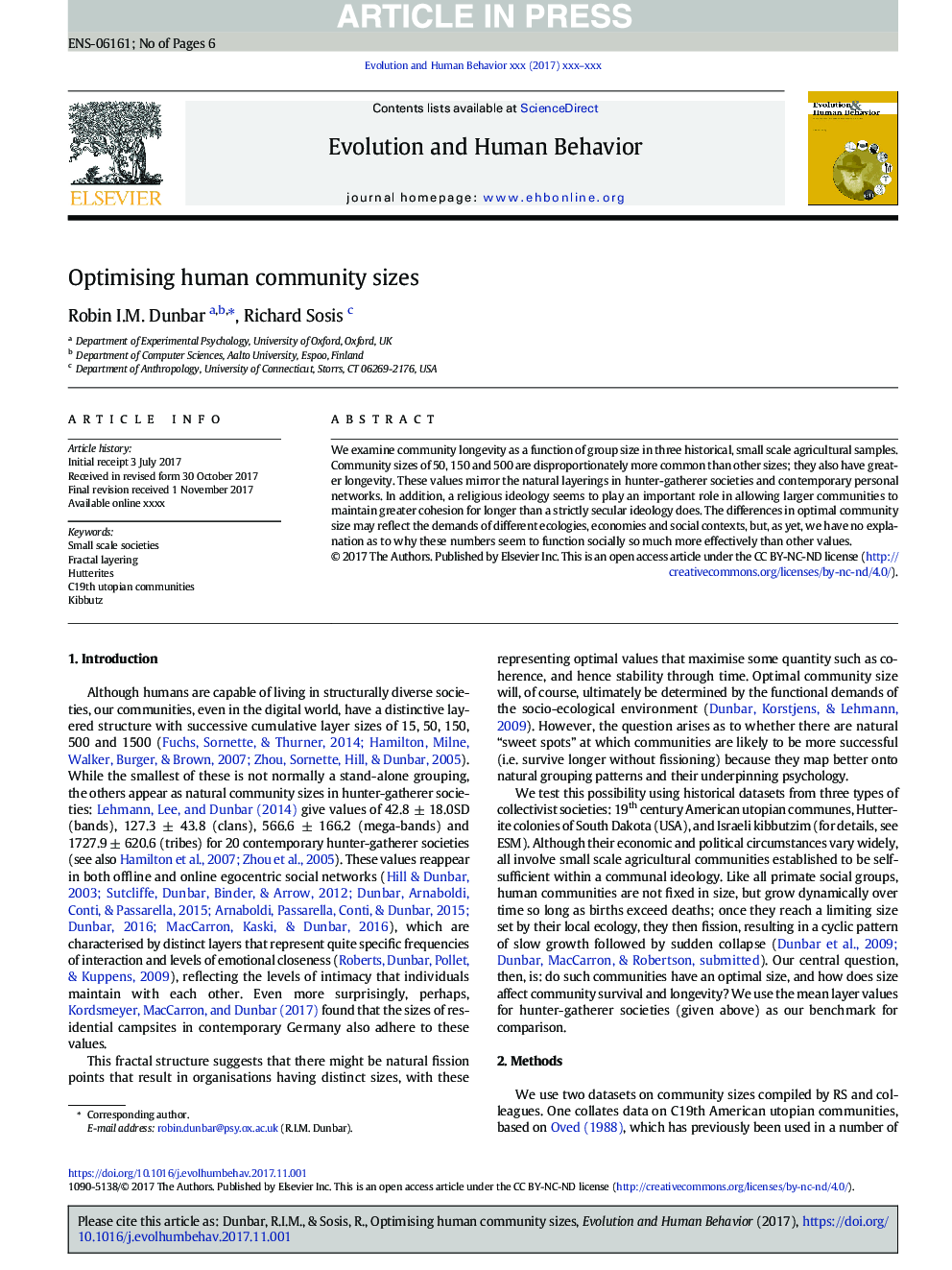| Article ID | Journal | Published Year | Pages | File Type |
|---|---|---|---|---|
| 7316437 | Evolution and Human Behavior | 2018 | 6 Pages |
Abstract
We examine community longevity as a function of group size in three historical, small scale agricultural samples. Community sizes of 50, 150 and 500 are disproportionately more common than other sizes; they also have greater longevity. These values mirror the natural layerings in hunter-gatherer societies and contemporary personal networks. In addition, a religious ideology seems to play an important role in allowing larger communities to maintain greater cohesion for longer than a strictly secular ideology does. The differences in optimal community size may reflect the demands of different ecologies, economies and social contexts, but, as yet, we have no explanation as to why these numbers seem to function socially so much more effectively than other values.
Keywords
Related Topics
Life Sciences
Agricultural and Biological Sciences
Ecology, Evolution, Behavior and Systematics
Authors
Robin I.M. Dunbar, Richard Sosis,
